This homemade classic butterscotch pudding recipe is a nostalgic treat. If you think you don’t like butterscotch, it’s because you haven’t had the real deal. I think you’ll be pleasantly surprised by how delicious this pudding is, y’all.
No boxes of mix here. We’re talking the marriage of caramelized sugar and browned butter with a dash of molasses. Real, homemade butterscotch pudding, friends!
Find the rest of my butterscotch recipes all in one place, and you may also want to check out my easy chocolate pudding recipe if you’re in the mood for chocolate.
For ease of browsing, here are all of my custard and pudding recipes.
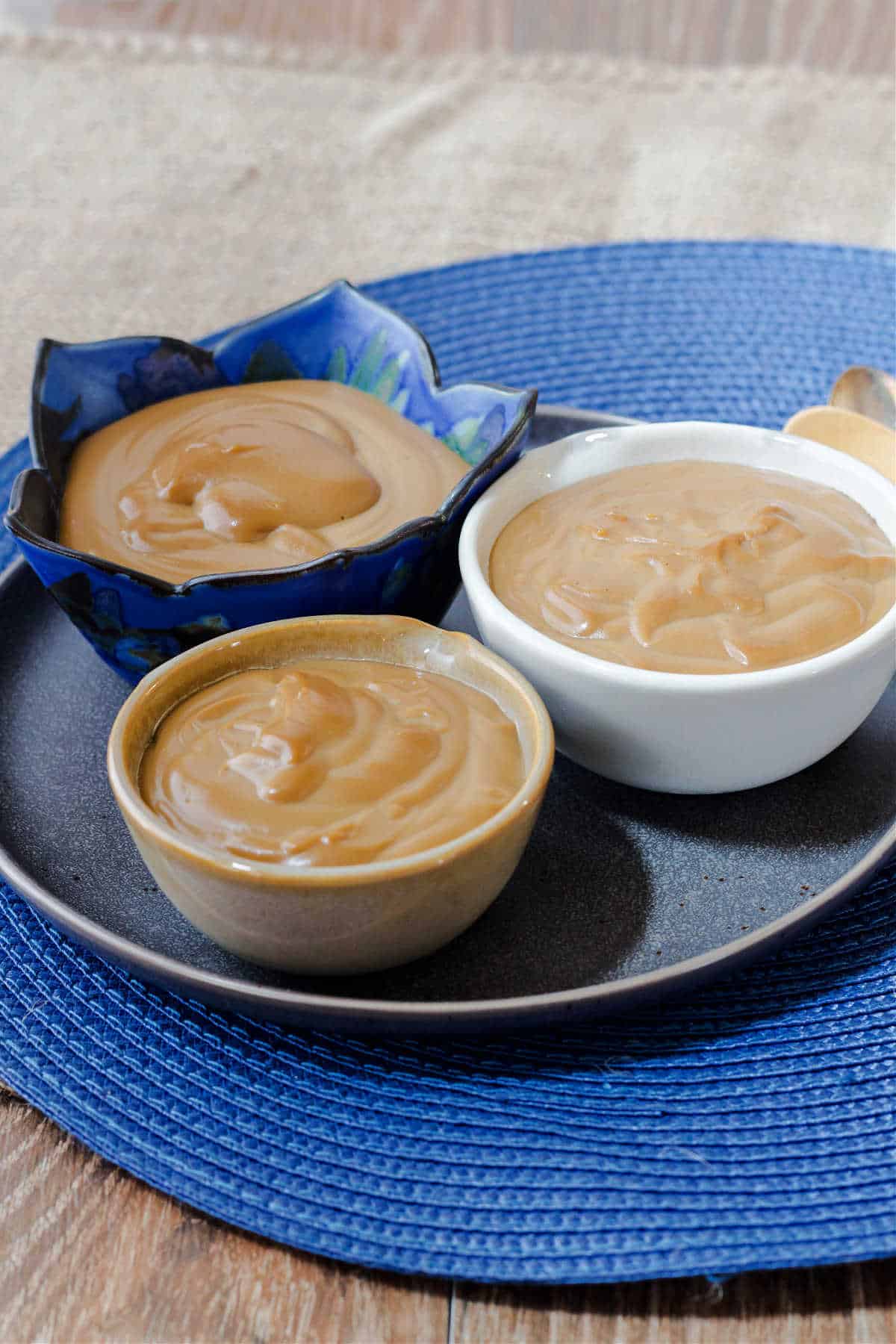
Old-Fashioned Butterscotch Pudding, At a Glance
✔️Skill Level: Intermediate
✔️Skills: Making Butterscotch, Tempering Eggs (Linked), Making a Starch-Thickened Custard (Linked)
✔️Type: Starch-Thickened Custard (Pudding)
✔️Number of Ingredients: 7
✔️Prep Time: 5 minutes
✔️Cook Time: 30 minutes (making butterscotch pluss cooking the pudding)
✔️Yield: 4 servings of about 1/2 cup each
Jump Straight to the Recipe
Watch my butterscotch pudding recipe web story here.
Your Butterscotch Pudding was amazing. As for freezing it – well there was none left to freeze!
Reader and Butterscotch Lover Alison
The trifle turned out great. A really good winter dessert. (We live in New Zealand) Thank you again for your advice on what to expect from the way the butterscotch separates and comes back again.
What Makes This Recipe So Great
If you look at a lot of recipes for butterscotch pudding, you’ll find that most have you:
Pastry Chef Online Participates in Affiliate Programs. If you make a purchase through one of my links, I may earn a small commission. For more information click to read my disclosure policy
- melt butter
- add brown sugar
- add the rest of the ingredients
- cook until thickened
While I have made this version before, I contend this is not real butterscotch.
The real magic happens when you cook the butter and brown sugar together until the butter browns and the sugar caramelizes.
You’ll know it’s ready when it just barely starts to smoke and smell caramelized.
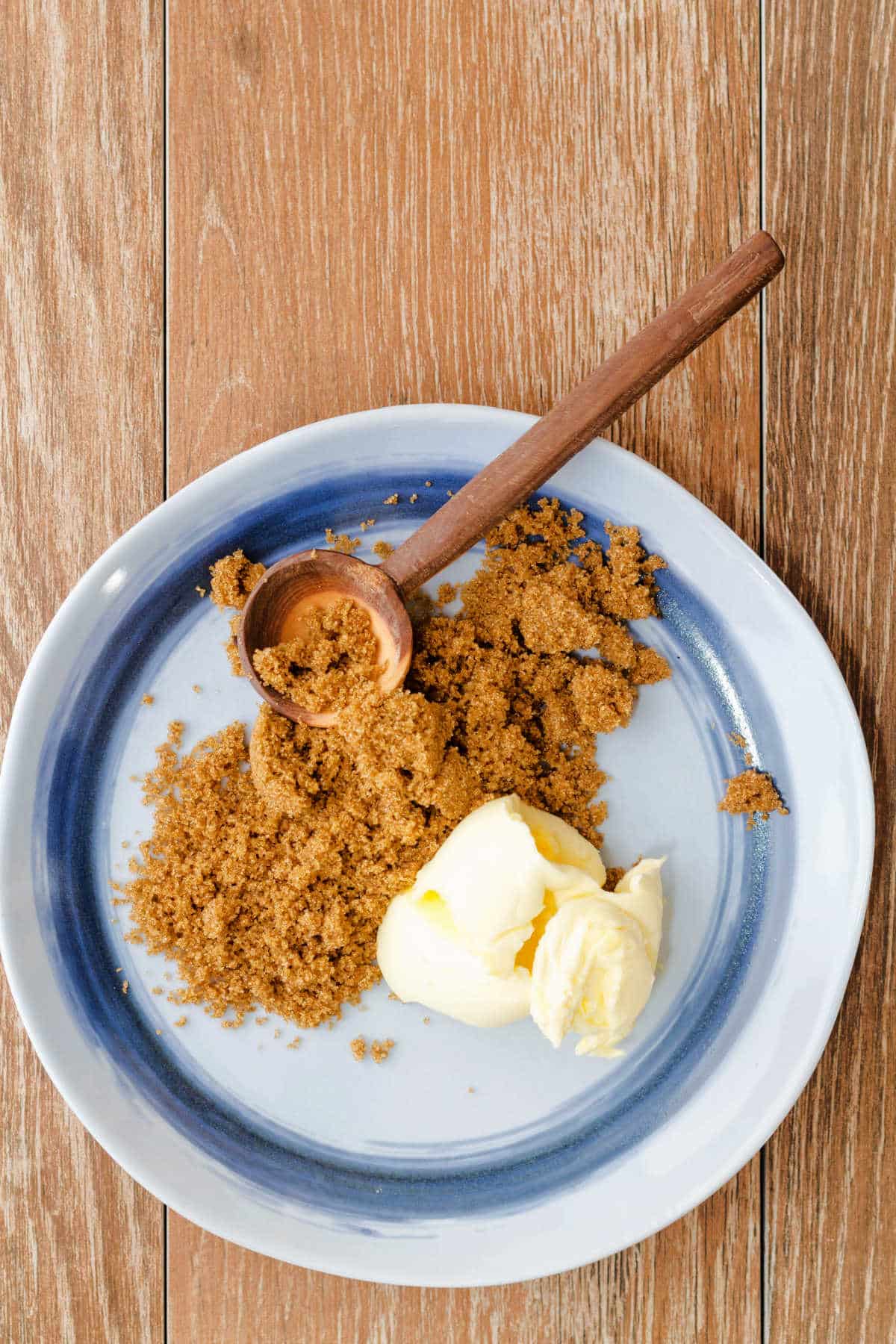
It’s the magical combination of browned butter and caramelized sugar with an undercurrent of molasses that defines the flavor “butterscotch.”
And you can’t get it without cooking the butter and brown sugar together for a pretty long time.
Tasting Notes
Old-fashioned butterscotch pudding has a deep and rich flavor. It is not too sweet, and it has just a bit of a bitter edge from the caramelized sugar and the molasses.
It contains enough salt to round out the flavor, although when you taste it, you don’t think, “Hey, this pudding is salty!”
Butterscotch is the perfect blend of browned butter, caramelized sugar, a touch of molasses, and salt. Think toffee, but without any nuts in it.
If you want to explore that further, you can read my recipe for cashew toffee.
If You Need More Instruction
I am experimenting with moving the recipe card higher up in the post. You may skip straight to the recipe if you would like.
There are also some helpful sections of additional information that appear after the recipe card.
Simply click on any of these headings to go to that section. Or you may choose to simply scroll through to skim them all.
✅Ingredients and Substitutions
✅How to Make Butterscotch
✅How to Tell When Your Butterscotch is Done
✅Making the Pudding, Step by Step (with photos!)
✅What to Do with Leftover Egg Whites
✅Jenni’s Tips
Questions?
If you have any questions about this post or recipe, I am happy to help.
Simply leave a comment here and I will get back to you soon. I also invite you to ask question in my Facebook group, Fearless Kitchen Fun.
If your question is more pressing, please feel free to email me. I should be back in touch ASAP, as long as I’m not asleep.
A Note About Measurements
My recipes are almost all written by weight, including liquids, unless otherwise specified.
For accuracy and consistency of results, I encourage you to buy–and use–a kitchen scale.
I promise that baking and cleanup will be so much quicker and easier.
This is the scale that I recommend for home use. I have owned and used one for years.
Don't let its small price and small size fool you. The Escali Primo is an accurate and easy-to-use food scale that I have used for years. It's easy to store, easy to use, has a tare function, and easily switches between grams and ounces/pounds for accurate measurements.
Love This Recipe? Please Rate and Review!
It will help me and other readers so much if you take a moment to rate and leave a review for this recipe.
You can use the stars to rate 1-5 (5 is best), and leave a review in the comments. It helps me make adjustments if any are needed, and comments help others decide whether the recipe is worth making.
Other ways to share include pinning, and/or sharing on your favorite social media platform.
Thank you so much for taking the time!

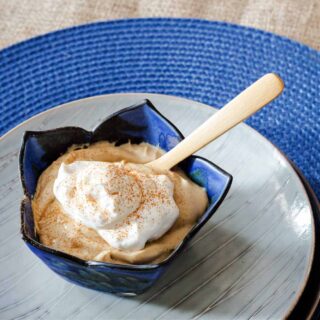
Old Fashioned Butterscotch Pudding
Equipment
Ingredients
- 3 egg yolks
- 1 1/2-2 Tablespoons cornstarch depending on how thick you like your pudding once it has set
- 2 oz water 56 grams or 1/4 cup
- 4 oz about 1/2 cup, packed dark brown sugar, by weight
- 3 oz 3/4 stick or 6 Tablespoons unsalted butter
- ⅜ teaspoon kosher salt I use Mortons
- 2 cups whole milk
- 1 teaspoon vanilla extract
Optional
- ½ cup heavy cream
- small pinch of salt
- 1 Tablespoon dark brown sugar packed
Instructions
- In a medium bowl, whisk the yolks and cornstarch together. Mixture will be very thick. Set aside convenient to the stove.
- Put the vanilla extract in another medium bowl and place a fine mesh strainer over the top. Set aside convenient to the stove.
- In a heavy-bottomed saucepan, heat the water and butter together over medium heat until the butter is melted. The addition of water will help the sugar (added in the next step) to completely dissolve before starting to caramelize.
- Add the dark brown sugar and salt, and cook together over medium-high heat, stirring constantly with a wooden spoon or high-heat spatula. The mixture will look very creamy and bubbly, and then all of a sudden, the butter will separate out and the whole thing will look kind of sad and like a failure. Keep going. In another couple of minutes, the mixture will come back together again. Don't stop stirring.
- As soon as the butterscotch comes back together, pour in the milk, all at one time and remove the pan from the heat. Do it carefully. The butterscotch will hiss and bubble and then turn into a hard mass. Carefully pry the hard mass off the bottom of the pan with your spoon or spatula and then return the pan to medium-low heat. NOTE: You can heat the milk until steaming but not boiling to minimize seizing.
- Stir until all the butterscotch has melted back into the milk. This could take 4-5 minutes. Just be patient and stir and stir. You will most likely have butterscotch stuck to your spoon or spatula. That’s okay. It will melt too. Just keep stirring.
- Once the "butterscotch milk" is nice and smooth, continue to heat until the milk is steaming. Then, temper about half the butterscotch into the egg yolk mixture, whisking very well.
- Pour the tempered yolks back into the pan and bring to a boil, stirring constantly. Allow the mixture to boil for 2 full minutes, whisking constantly..
- Pour the pudding through the fine mesh strainer into the bowl with the vanilla. The mixture will be very thick, so use the pack of your spatula to press it through.
- Stir until the vanilla is mixed in.
- At this point, you can pour into small bowls or leave it in the large bowl and press plastic wrap down onto the surface of the pudding. Either way, refrigerate until cold, or you can eat it warm. I won’t judge you.
- See NOTES below for how to serve. Enjoy!
Did You Make Any Changes?
Video
Notes
- Whisk the pudding well so it is smooth and creamy.
- Whisk in a portion of the whipped cream to lighten the pudding.
- Once incorporated, fold the rest of the whipped cream in until no streaks of white remain. Serve in individual bowls.
Nutrition
How to Make Butterscotch for the Pudding
The ingredients themselves are very simple and straightfoward. Making butterscotch is really all about the technique rather than using specialty ingredients.
Ingredients
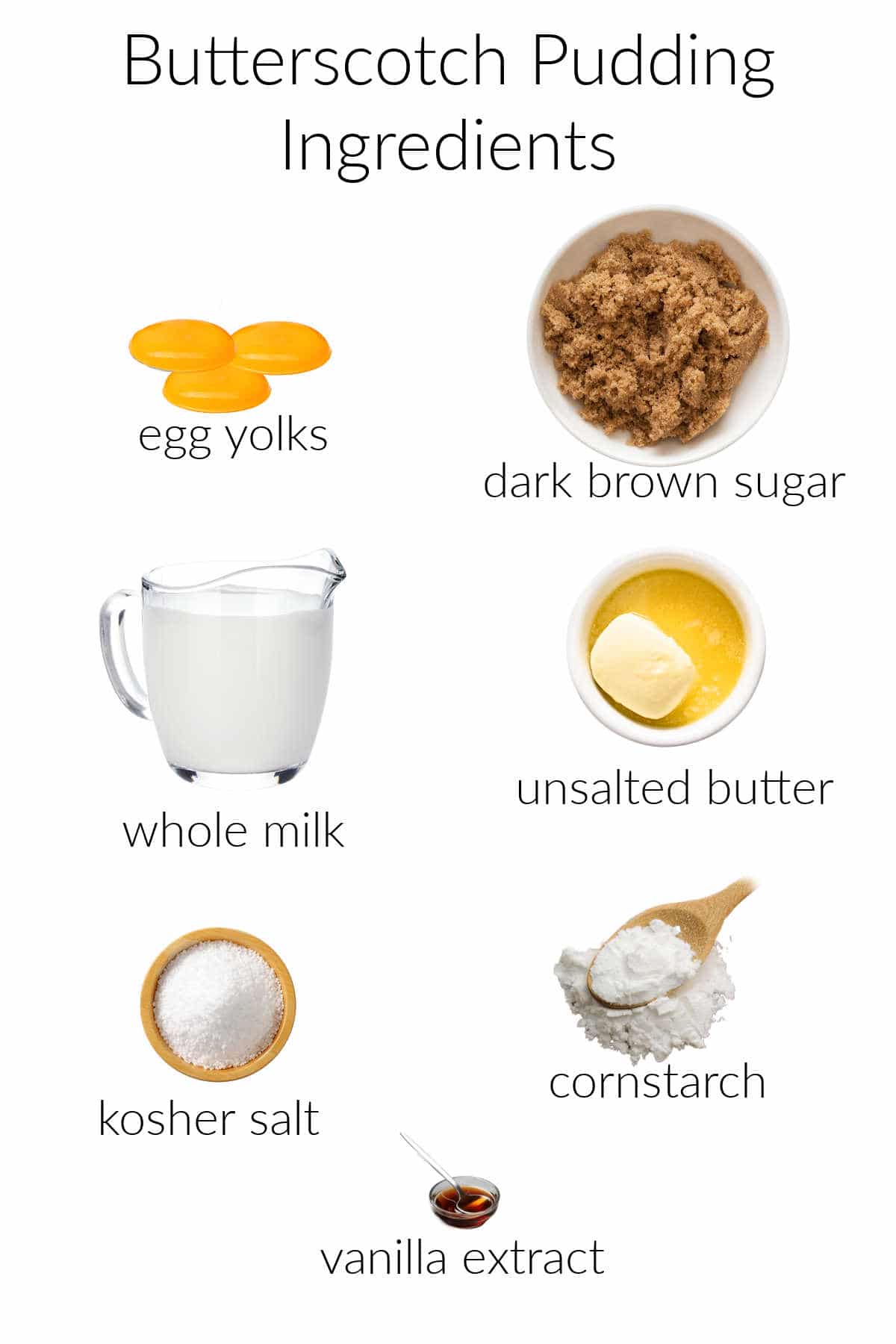
- brown sugar: since the flavor profile includes molasses, I prefer to use dark brown sugar. If all you have is light brown, you can also add an additional 2 teaspoons of molasses if you have it
- butter: I like to use unsalted since it’s easier to control the overall amount of salt when I add my own
- salt: I generally use kosher salt. Salt plays a big role in the flavor of butterscotch, so don’t skimp
- egg yolks: provides richness and is what makes this a custard rather than “just” a pudding. For a bit less richness, you can go with 2 or even 1 yolk
- cornstarch: provides thickening power and body. When using cornstarch, you have to boil it for 2 full minutes. You can substitute all purpose flour if you want. In that case, you only need to boil your mixture for about 20 seconds
- milk: I prefer whole milk, but you can also use 2%.
- vanilla extract: rounds out the flavors
- NOT PICTURED: water. I have begun adding water to the butter and brown sugar mixture to ensure the sugar dissolves completely before it starts to caramelize
A Note About the Video
The video I’ve chosen for this post is of me making butterscotch creme brulee, but the butterscotch making process is exactly the same.
Since making butterscotch is the most important part of making this pudding, please take a look so you know what to expect.
Making the Butterscotch
Keep in mind this is just one step in the process of making this recipe. But it is the most vital step.
But I’m breaking the “how to make it” part out so you can get a feel for it. Be sure to have the rest of your ingredients ready to go, because you’ll continue making the pudding after you make the butterscotch.
Time needed: about 20 minutes.
- Melt the butter together with the dark brown sugar and salt.
- Heat to a boil, stirring constantly. At first, it will be hard to get the butter and sugar to blend together. Then all of a sudden, it’ll be a smooth, boiling mixture. Keep cooking and stirring.
- Continue cooking, stirring constantly, until the sugar caramelizes. Once your butterscotch is boiling, continue cooking. First the butter will separate out again and you think you will have messed up. But then it will come back together after a couple of minutes of cooking and stirring. Once it comes back together, that’s when you add the milk. Hopefully these photos will come in handy.
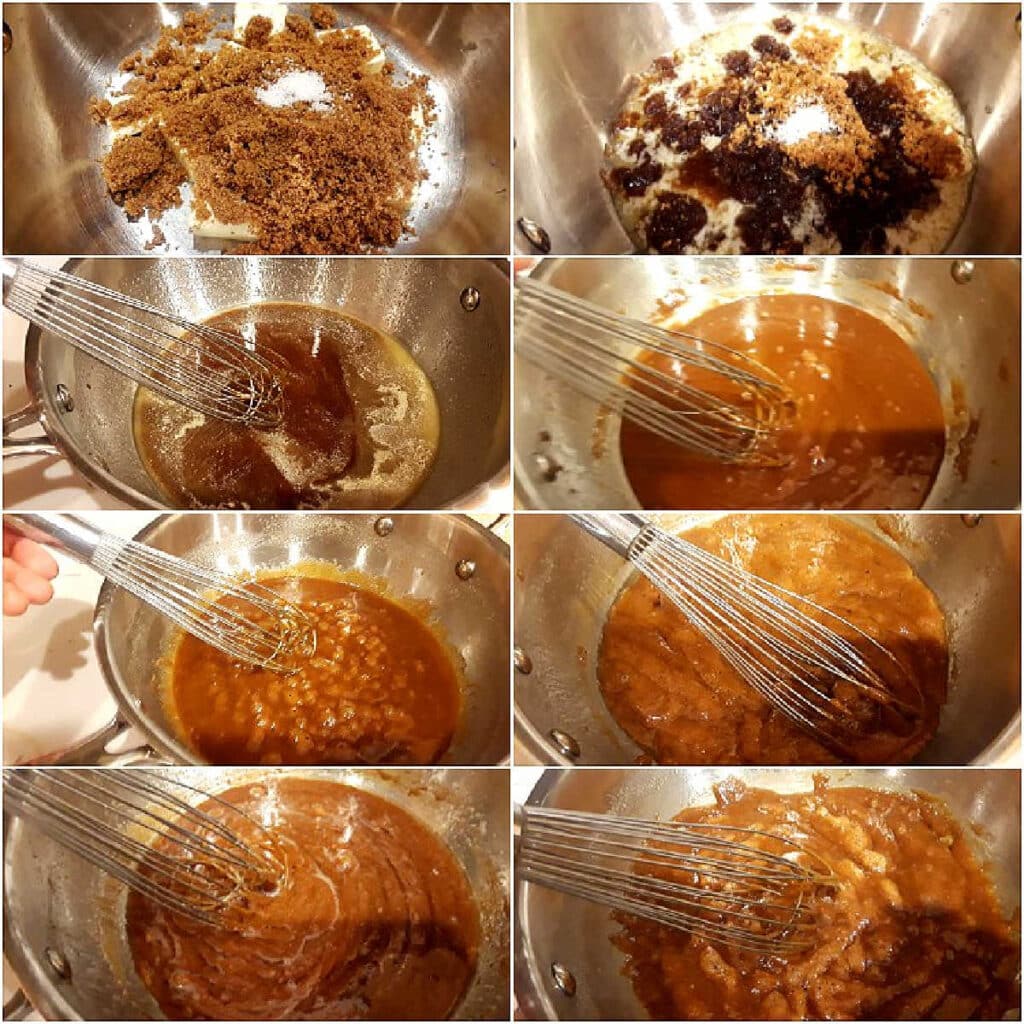
NOTE: You can lessen the chance of butter leaking out if you cook on low heat. But that takes time and we need pudding now. Plus, the butter mix back in with no problems, especially when you add the dairy.
How to Tell When Your Butterscotch Is Done
Since not everyone cooks at a high heat, not everyone’s butter will necessarily leak out, so here are some other cues to let you know when your butterscotch is ready.
✅The color of your mixture will darken
✅You will begin to smell caramelized sugar
✅You’ll see just a couple of wisps of smoke coming off the mixture
Once you see/smell these signs, immediately remove your butterscotch from the heat and add the dairy.
NOTE: You can make this pudding before the color darkens, before the sugar starts to caramelize, and before it begins to smoke just a tiny bit, but the flavor will not be as intense or as deep.
To reiterate, the butterscotch making is the most important part of making this recipe.
Here’s a reader’s take on making their butterscotch for this pudding:
I pinned this recipe ages ago and finally tried it out last night. It was a success! I did experience the sugar and butter separating like you said, but I see how someone else might not see it because it’s not necessarily super obvious that it’s separated. For me it looked like the sugar and butter solids had blended together but the water in the butter had oozed out a bit and I could see it in streaks in the pot. So maybe other people wouldn’t call that “separated”. But it did definitely look “sad”! But it came back together, and the final result was very butterscotch-y and delicious! Will definitely be making this one again.
Reader and Butterscotch Lover Jem
If you’re concerned you may overshoot the mark, definitely err on the side of caution and add the milk sooner rather than later.
Once you get the hang of it, though, you’ll be able to get the depth of flavor and slight smokiness that makes butterscotch such a complex flavor.
PS I also amended the recipe to indicate when to add the salt. Thanks for that catch, Hassan. Also, I sincerely doubt you are an idiot.
Butterscotch Tip: Add a bit of water to your brown sugar and butter mixture in the pan. The water will help ensure the sugar dissolves completely before everything starts to caramelize.
Making the Pudding, Step by Step
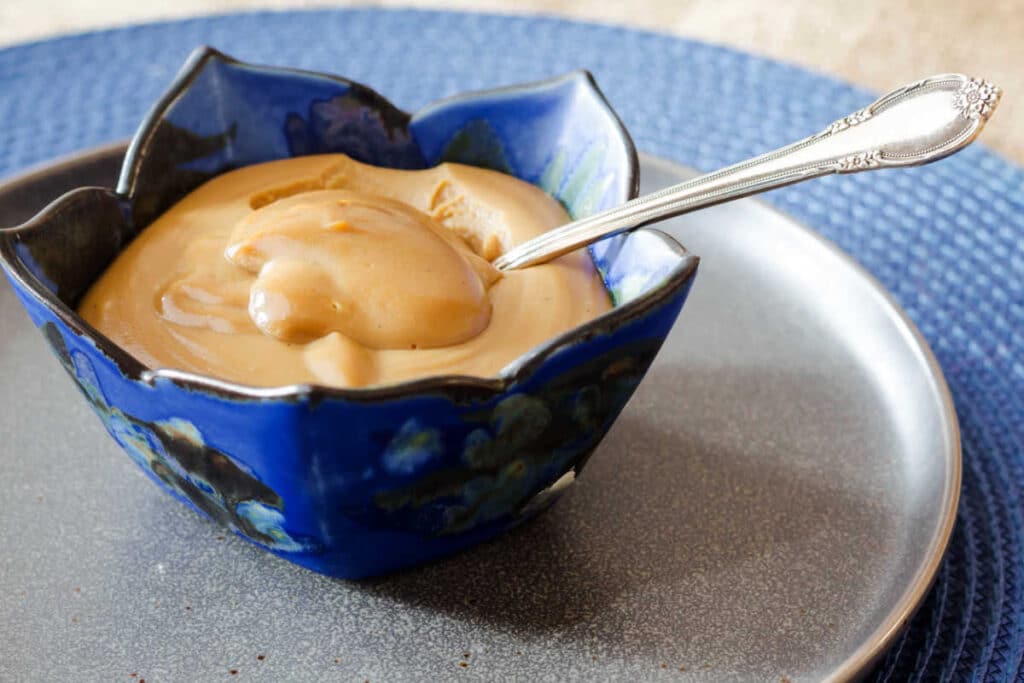
- Mix the yolks and cornstarch together, and set aside.
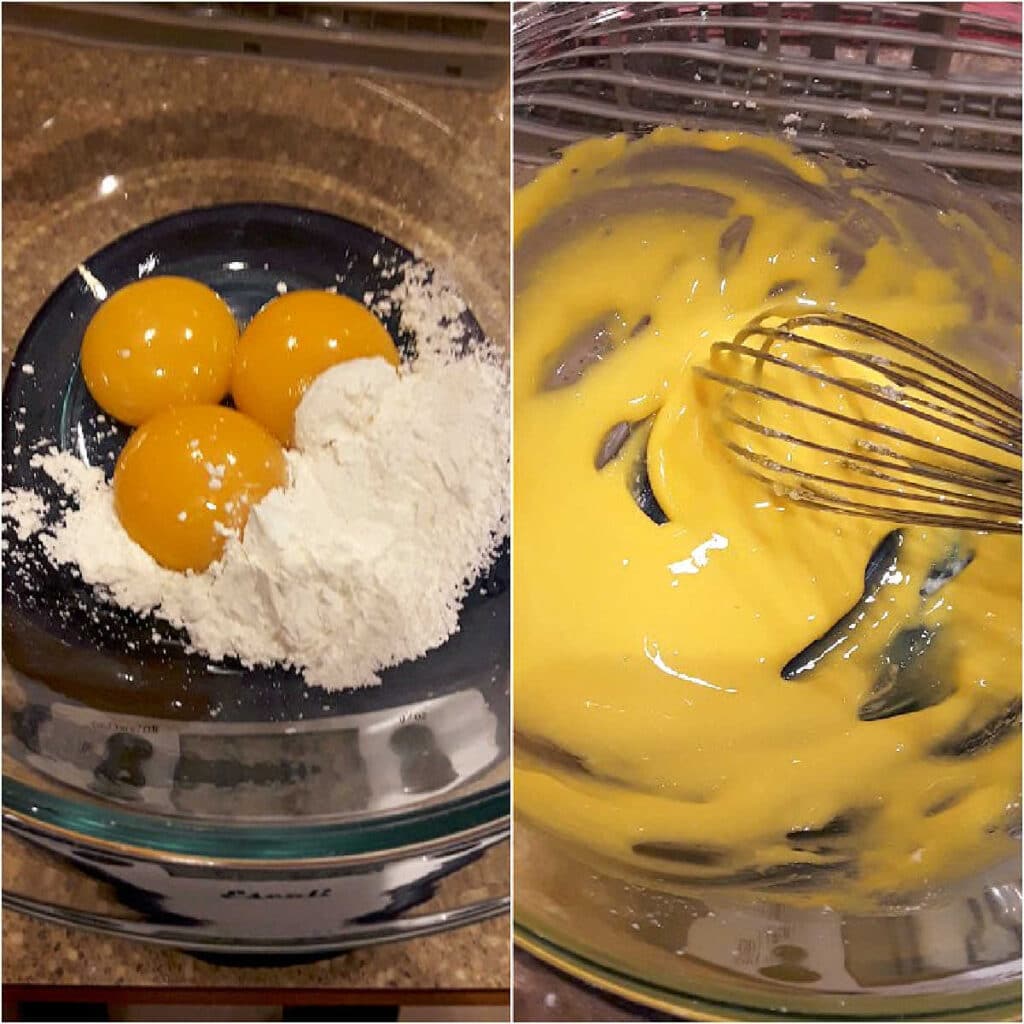
- Make the butterscotch (see the How-To above) and add the milk. Stir until smooth.

- Once the butterscotch is all melted back into the milk and it is steaming hot, temper into the eggs.
- Pour the egg mixture back into the pan and bring to a boil. Boil two minutes.
- Pour the mixture through a fine mesh strainer into the bowl with the vanilla. Stir until combined.
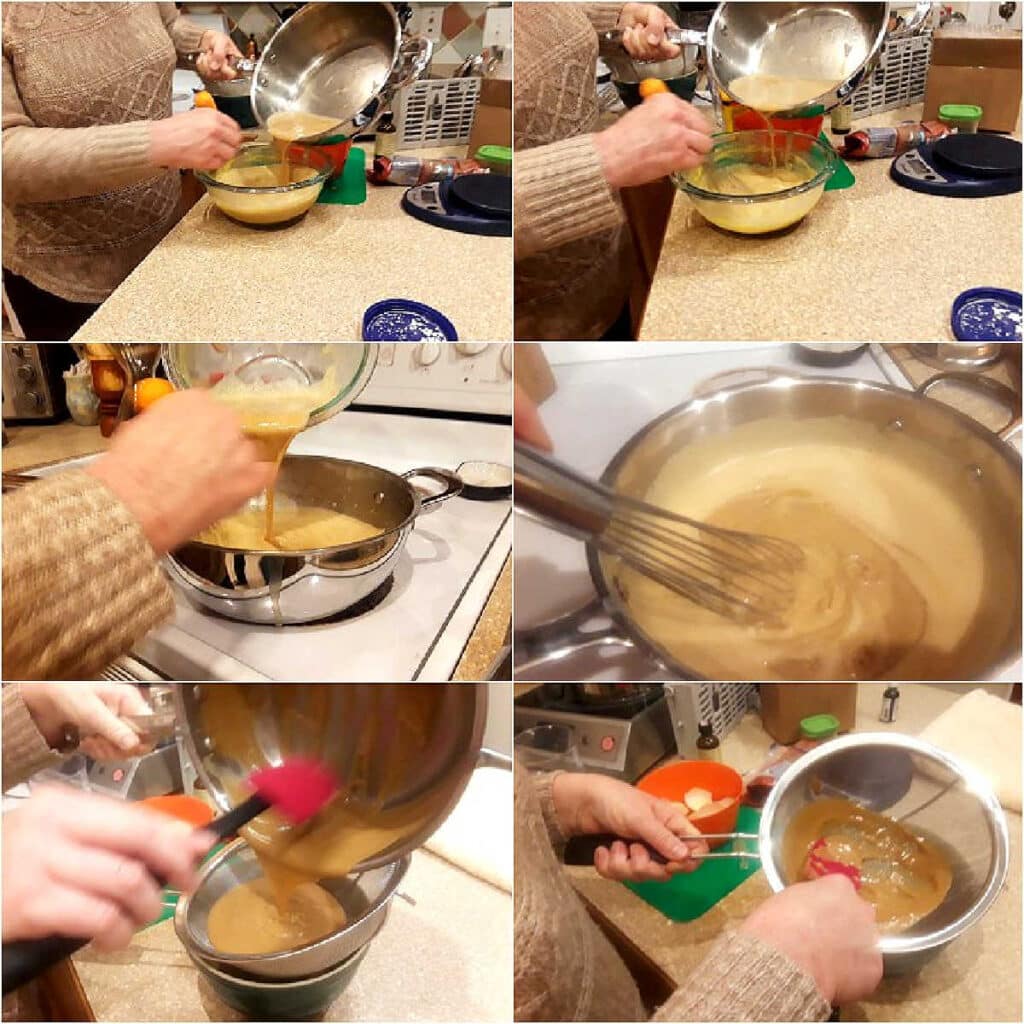
How to Temper Eggs
Here’s a quick how-to on tempering eggs. It’s important that you raise the temperature of eggs slowly so they don’t scramble. You can see the process in the first three images in the collage above.
Here’s how to do it:
- Whisk eggs well.
- Pour a little of your hot liquid into the eggs, whisking all the time until combined.
- Continue adding about half of the hot liquid in a steady stream, whisking and whisking, until the egg mixture is hot.
- Pour the now-hot egg mixture back into the pan while continuously stirring.
- Continue with the rest of your recipe.
What to Do with Leftover Egg Whites
After making this pudding, you’ll have 3 whites that need a job. Here are a few ideas for using them up:
- Use them in brownie brittle or crispy chocolate cookies
- Make some Italian meringue or Swiss meringue and use it as a light and airy topping for the pudding
- Turn your meringue into Swiss buttercream (this recipe happens to be mint) or Italian buttercream and then use that to ice some cupcakes
- Make an eggwhite omelet. This recipe calls for 4 whites, so either scale down a bit or add an extra white
- Use the whites in a white cake recipe
- If you like them, consider using your 3 whites to make a small batch of macarons. This recipe needs two whites
Tips and Tricks
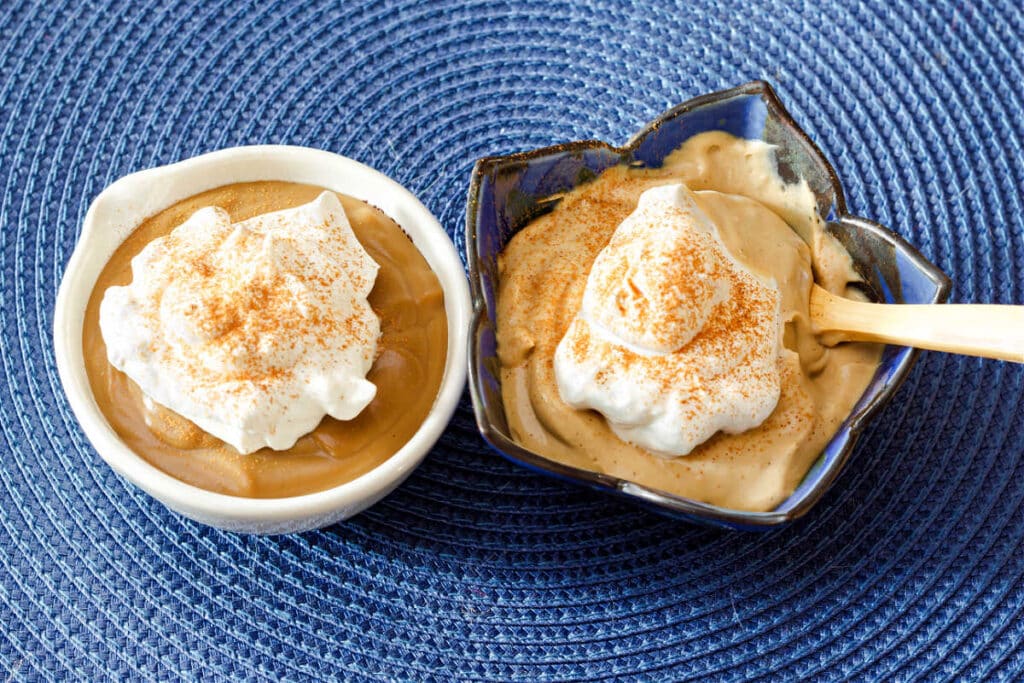
Get in the habit of always straining your pudding. The strainer will catch any little bits of egg or lumps of flour that may have gotten away from you.
Depending on the pudding texture you like, rich and dense or lighter and creamier, you can:
- let the pudding set up in individual bowls and then top with whipped cream (or not),
- or you can chill the pudding, whisk it smooth, and then fold whipped cream into it.
PRO TIP: When chilling the pudding, if you don’t want a skin to form on top (I’m weird and like the skin), press plastic wrap directly onto the surface of the pudding while it cools.
For double butterscotchiness, you can serve your pudding with whipped cream sweetened with a couple of spoonfuls of homemade butterscotch sauce.
Q & A
As written, yes. Just check your cornstarch to make sure it’s labeled as gluten-free. If you are allergic to gluten or have celiac, make sure none of the ingredients are processed on a shared line with any wheat products.
Absolutely. Pudding doubles really well. If you don’t want to be left with having to figure out what to do with 6 egg whites, use 4 yolks in a double batch instead.
Aside from just eating it straight up, it would be fantastic when layered with gingersnaps or gingerbread for a trifle. You can also use it to fill a pie shell for butterscotch pie.
If you ask me, this recipe is scaled for two, but if you’re a normal person you can cut this recipe in half (use just 1 egg yolk) and will end up with the perfect batch for two people to split.
More Old-Fashioned Pudding Recipes
Pudding is the best. So creamy and comforting. Here are some more you might enjoy.
As far as I’m concerned it’s never the wrong time for pudding, so I make this easy vanilla pudding often. It’s rich, creamy, and easy to remember so I don’t always have to run to the recipe when I need a pudding fix.
If you’re feeling chocolatey, caramel chocolate pudding is rich and has a complex and wonderful flavor.
And if you’re not feeling like caramelizing some sugar, make my easy chocolate pudding. It seriously is super easy to make, and oh, so satisfying!

Hi, y’all! I hope you’ve enjoyed this post and hopefully also learned a thing or two.
If you like my style, I invite you to sign up for my occasional newsletter, The Inbox Pastry Chef.
Expect updates on new and tasty recipes as well as a bit of behind-the-scenes action. I hope to see you there!
And there you have it friends, rich and comforting butterscotch pudding. Please give it a try, and then let me know how you like it!
Thank you for spending some time with me today. Take care, and have a lovely day.



Join in Today!
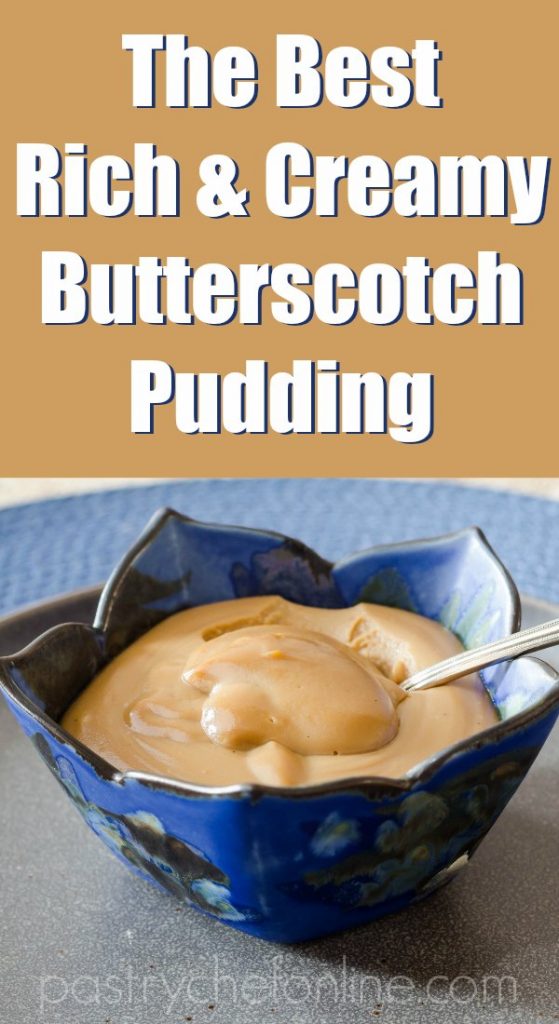
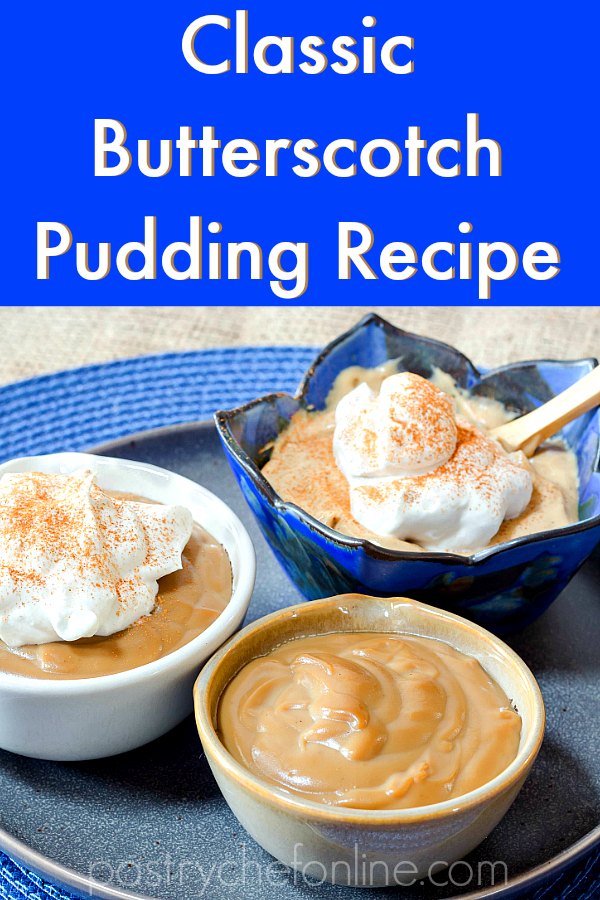
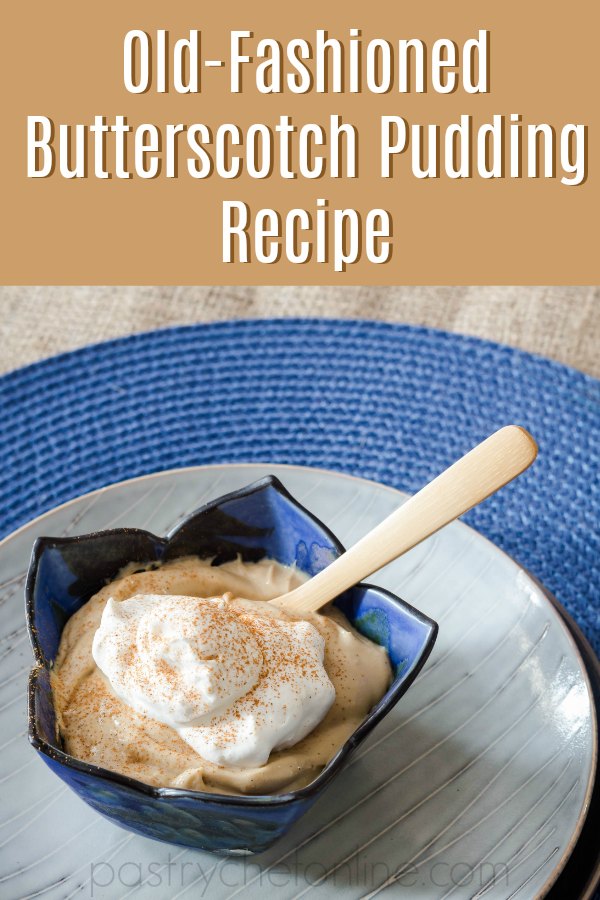
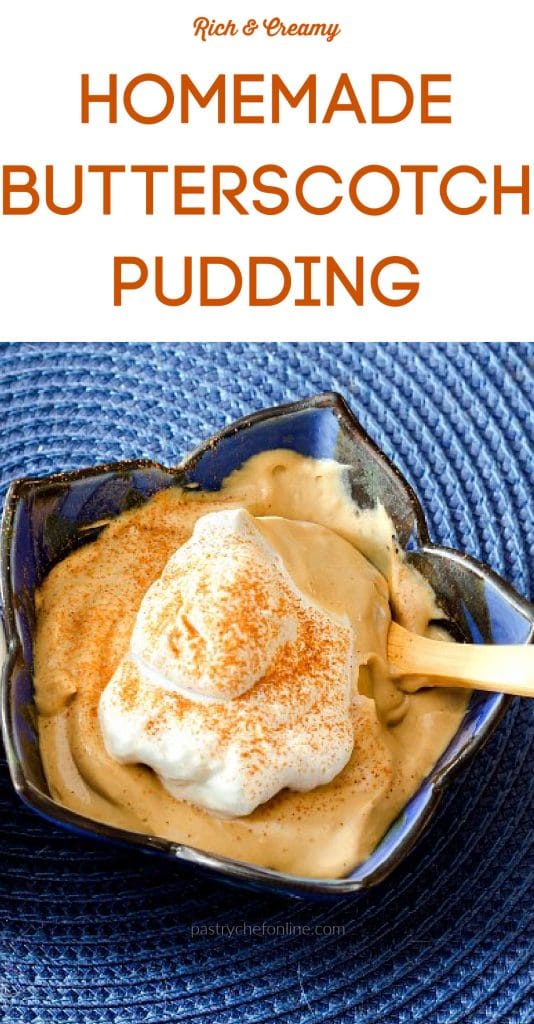
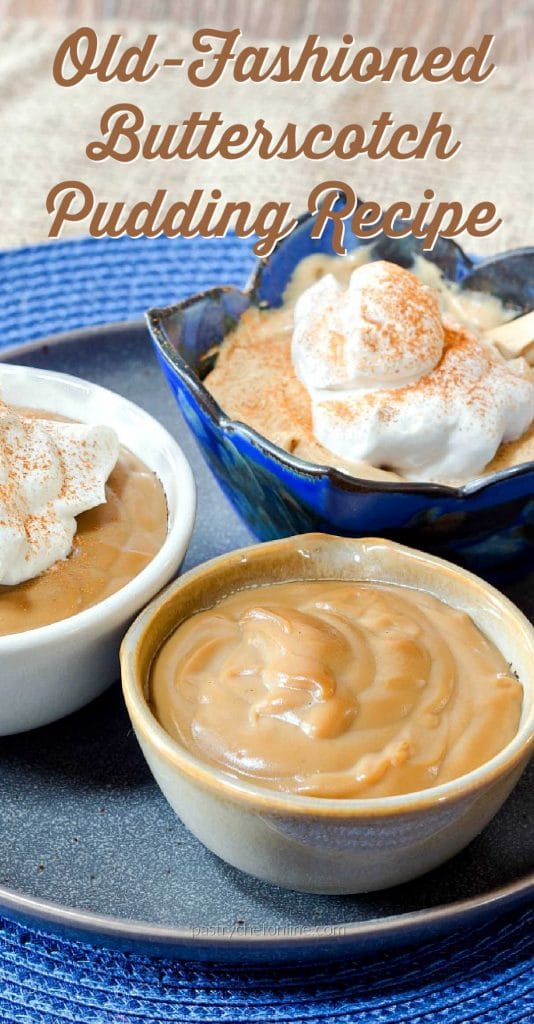
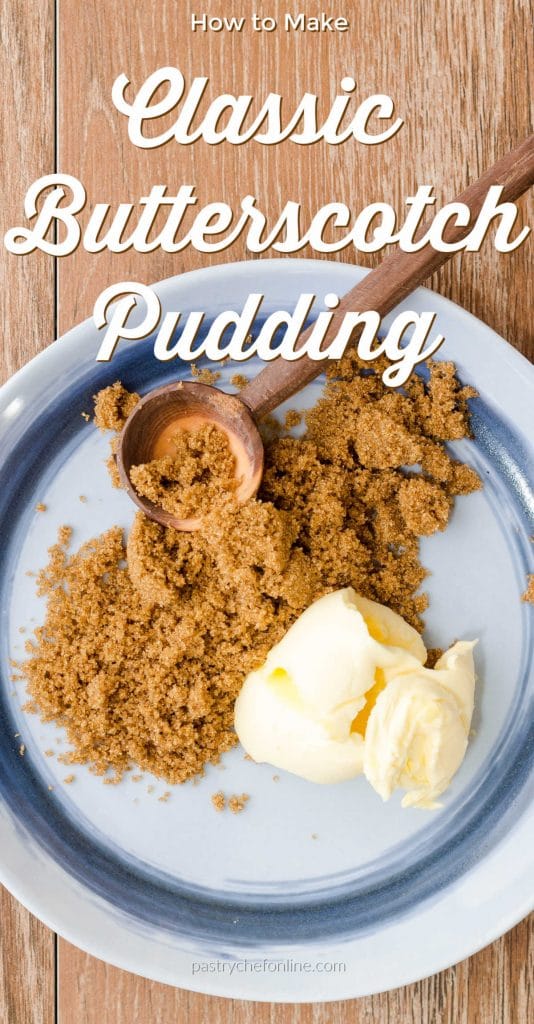
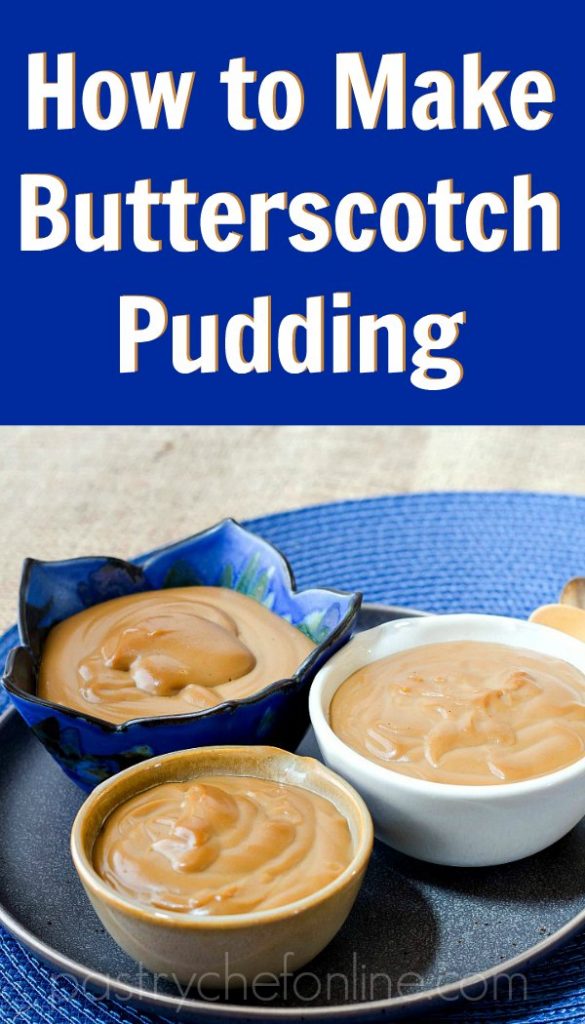
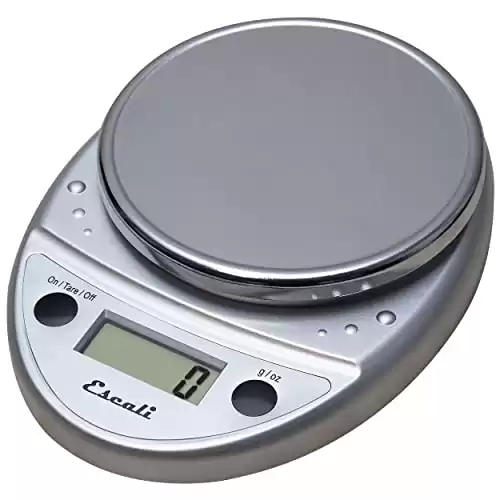
Hello Jenni, going back a step. i made another recipe that said to add the butter AFTER cooking. it didnt taste like I was expecting. I kept thinking how can this turn without cooking the sugar and butter together? it didnt…. So I was searching again.. i found your recipe. WOW!!! I made it . I made a few errors but it turned out. I did add 1/2 tsp of brandy. my search is over. This was so good. thank you.
donna
Hi, Donna! Adding the butter after cooking is just…not the best plan! So glad you found my recipe. 🙂 I love all things butterscotch, and I’m a firm believer in cooking the butter and brown sugar together until the butter browns and the sugar caramelizes. Only then do you really, truly have authentic butterscotch flavor. Glad your search is over!
This was amazing! I was glad to see the butter was supposed to separate, but mine never seemed to come back together. I cooked until it was so dark I was scared I’d ruined it, then took it off the heat and said “I’ve come this far,” and dumped in the milk. Tasted it after a few minutes of melting the candy back into the milk and laughed because somehow, it tasted exactly like a Werther’s. We basically dumped it on our ice cream.
Oh, Jen, this comment made me so happy! I just read it to my husband! Nothing like a liquid Werther’s poured on ice cream–I’ll have to try that trick at some point! I’m glad you went for it–it’s definitely a fine line between perfect and burned, so go you!
I pinned this recipe ages ago and finally tried it out last night. It was a success! I did experience the sugar and butter separating like you said, but I see how someone else might not see it because it’s not necessarily super obvious that it’s separated. For me it looked like the sugar and butter solids had blended together but the water in the butter had oozed out a bit and I could see it in streaks in the pot. So maybe other people wouldn’t call that “separated”. But it did definitely look “sad”! But it came back together, and the final result was very butterscotch-y and delicious! Will definitely be making this one again.
I am so glad you made it and love it! And thanks for adding your experience with making butterscotch. I’m going to add your comment to the post so people can have yet another reference point for the road to butterscotchy goodness. 🙂
Made this for my Dad, who is on a very salt restricted diet. Left the salt out completely and it was delicious!! So happy to be able to make him something he wants, without the salt, and still have it taste good.
Tried this and failed abjectly… I kept waiting for the butter to separate out but it never did and I scorched the sugar waiting. Final product looks like chocolate pudding and tastes… inedible. Maybe some indication of how long to cook the sugar would help idiots like me. Also I assumed the salt goes with the butter and sugar?
I’m very sorry the recipe didn’t work out for you. It’s hard to give the amount of time it takes for all the stages to occur because everyone’s stoves are different. I try to give as much detail and as many cues in the video as I can to give you the best chance of success. If you’re game to try again, turn your heat down to moderate and stir and watch it carefully. Again, I’m sorry it didn’t work out for you. Thank you for letting me know.
PS, add the salt with the sugar when making the butterscotch. I will make that change. Thank you! PPS: I updated the post with the change in the recipe indicating when to add the salt. I also added the video for how to make butterscotch creme brulee. It’s a different recipe of course, but you make the butterscotch exactly the same way. I hope you find it helpful!
oh my goodness – frozen pudding even more amazing. I am planning to make a gingerbread, pumpkin and butterscotch trifle at the weekend. The recipe I found said use PACKET butterscotch pudding. That is how I found your wonderful website. Thank you so much for sharing. I will let you know how it goes.
Alison
Yeah, just say no to packets of pudding! lol Your trifle sounds fantastic. Looking forward to hearing how it goes over!
Your Butterscotch Pudding was amazing. As for freezing it – well there was non left to freeze!
The trifle turned out great. A really good winter dessert. (We live in New Zealand) Thank you again for your advice on what to expect from the way the butterscotch separates and comes back again.
I am thrilled you enjoyed it. I didn’t want to say out loud there wouldn’t be any left because I just wanted to answer your question, but I’m not surprised it’s all gone! And the first time I made butterscotch and the weird separating thing happened, I got all sweaty and sad, so I wanted to make sure nobody else felt the same way.
just wondering if this can be frozen? So I could have half now and half later. I cant wait to try this. Looks amazing- thank you
Hey, Alison! I’m so glad you like the sound of the pudding! Yes, you can freeze it, maybe even turning half of the pudding into pudding pops on sticks. My vote is to eat the frozen portion frozen rather than thawing it, because I think it might weep and break some when thawed. You could also make a half recipe rather than a full one if you don’t think you’ll be eating all of it within 3-5 days. Please let me know how you like it!
Hi Jenni,
I love your recipes and am wanting to make this pudding for guests on Friday. My concern and question is that I use Diamond kosher salt as opposed to Morton’s and I understand thaty by volume Morton’s is twice as salty as Diamond kosher salt. (https://www.tastecooking.com/kosher-salt-question/) Does that mean I need to use whatever 1/2 of 3/4 teaspoon is for this recipe?
Thanks!
Alonna
Great question! I’m afraid I’m going to have to fall back to “to taste” for this. I don’t find Morton’s to be saltier than Diamond per se, but Diamond has larger crystals so, given the same volume, it will weigh less thang–and be less salty than–Morton’s. So you’d actually end up having to use a bit more Diamond. I also tend to be pretty heavy handed when it comes to salt. I think that has to do with my restaurant work. I recommend using the same volume amount of Diamond and then taste. You may want to add a touch more, or you may find you like it that way. I hope this helps some!
Do you have any idea how much I want a whole pot of this right now!? What a great post and recipe – can’t wait to make this.
I do hope you give it a try–it is so good! Let me know what you think, Beth! 🙂 xo
yeah my dad will like this
How does a pirate say “Yum!” ?
“This be quite tasty, puddin’, argh!” I know, because I looked it up on the English-to-Pirate translator! 🙂
and it is Talk Like a Pirate Day, too – it is good that i don’t have to CHOOSE BETWEEN eating butterscotch pudding or watching Johnny Depp…